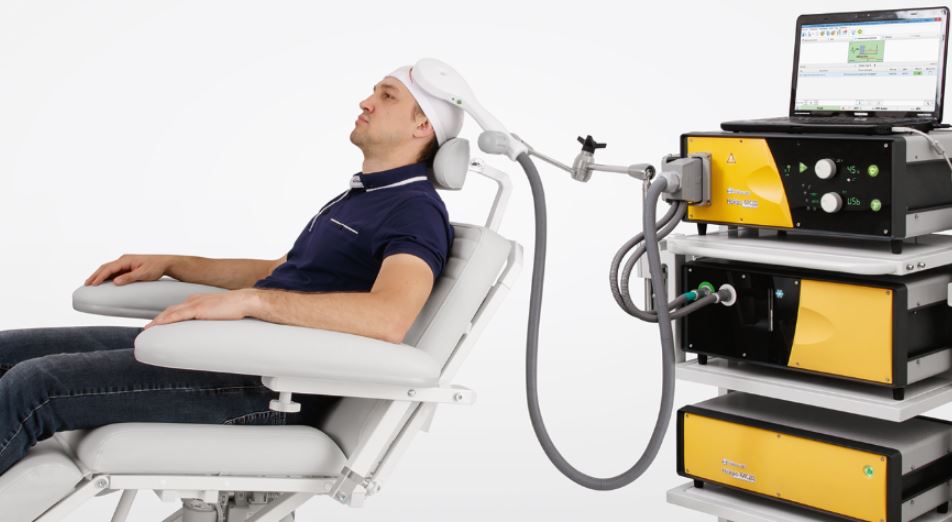rTMS FAQs
What is rTMS?
Repetitive Transcranial Magnetic Stimulation (rTMS) is a treatment for depression. It involves applying magnetic energy to the surface of the brain to create small electrical currents. Studies have shown that rTMS can work well for patients with depression.
How does it work?
During treatment, the person receiving rTMS sits on a chair and a coil is placed on their head. When the machine is on, an electrical current passes through the coil and creates a magnetic field. At the right strength, the magnetic field effects electrical activity in the nerves inside the brain.
How long does the treatment take?
The treatment takes between 20 minutes to 45 minutes. A course of rTMS treatment will usually take place five days (weekdays) a week for four weeks.
What will it feel like?
Everyone’s experience is different, but most patients describe it as a tapping feeling. It may feel strange and, for some people, a little painful at first. Almost all patients get used to the feeling after a while and it usually only lasts during the treatment.
Do I need to take any precautions while undergoing rTMS?
Please let the treating team know if your physical health changes or you change medications while having rTMS treatment. Illegal drugs and too much alcohol should not be used while undergoing rTMS as it may increase risk of side effects especially a seizure.
What are the common side effects of rTMS?
A common side effect of rTMS is a tapping feeling on the scalp. Some people experience tension and aches around head and neck. These side effects are easily treated with painkillers like Panadol. It is very rare to have a seizure from rTMS treatment. You will also be able to discuss side effects with the staff at the team caring for you.
Risks of rTMS
While rTMS is a very safe procedure there are some risks associated with its use. Before being offered rTMS, patients are carefully assessed to make sure that this will be a safe form of treatment for them. Seizure is the most serious concern with rTMS treatment. It is estimated that seizure may occur in one per 30,000 rTMS treatment sessions. This risk of seizure is thought to be comparable to, or even lower than the risk of seizure with antidepressant medication. Patients with a history of bipolar disorder may be at risk of experiencing an episode of mania with rTMS.
Fainting can occur in rTMS and isn’t harmful. Although differentiating whether someone has had a rTMS induced seizure versus an episode of fainting can be difficult. During rTMS the magnetic coil makes a clicking noise which can be quite loud. This can lead to transient changes in hearing ability. This is easily prevented by using ear plugs which will be offered at the start of every treatment. If patients have metal inside their head or on the surface of the head this can heat up during a rTMS session leading to burns. Metal loops can generate currents when exposed to magnetic fields and be particularly likely to heat up.
Situations where rTMS is avoided
- If you have epilepsy or have previously had a seizure.
- If you have anything in your head that may be affected by magnetic fields such as surgical clips or implanted devices (for example cochlear implants). Metal may move or heat up and electrical devices may malfunction when exposed to magnetic fields.
- Likewise, devices outside of the head such as cardiac pacemakers may malfunction if the rTMS coil is accidently operated too close to them.
- If your health is such that the event of a rTMS induced seizure would be particularly dangerous: for example patients with serious heart disease or raised intracranial pressure.
- If you have an active brain disorder (e.g. recent stroke).
- In children and adolescents. The research into the use of rMS in these populations is extremely limited.
- If there is the possibility of pregnancy.
- Withdrawal from alcohol or substances.

How to access rTMS
Patients interested in rTMS will need a referral to a psychiatrist with admission rights to Nundah Private Hospital.
You can contact our Admissions Team via our details below or access our online forms:
Phone: 1800 231 444
Email: Ndh.admissions@imh.com.au